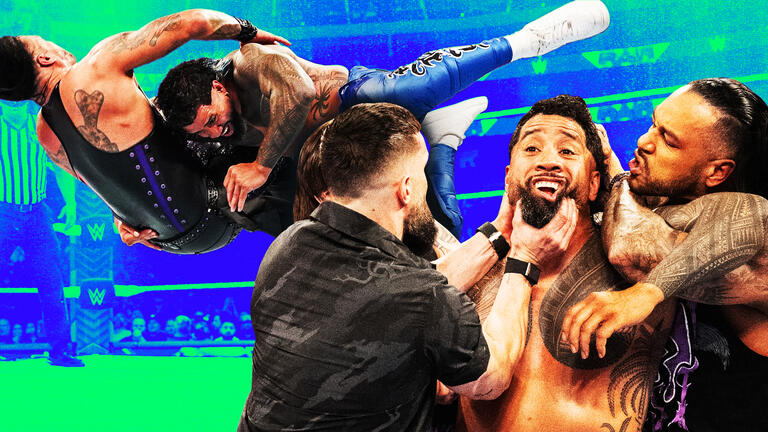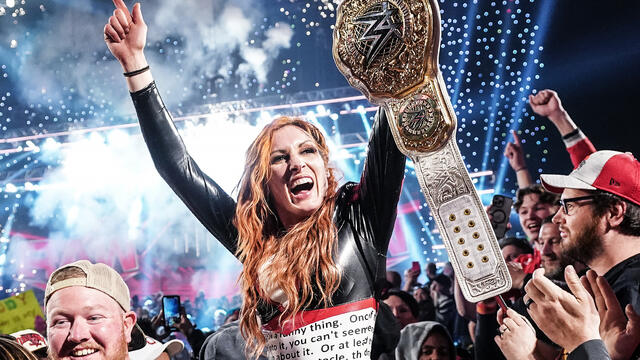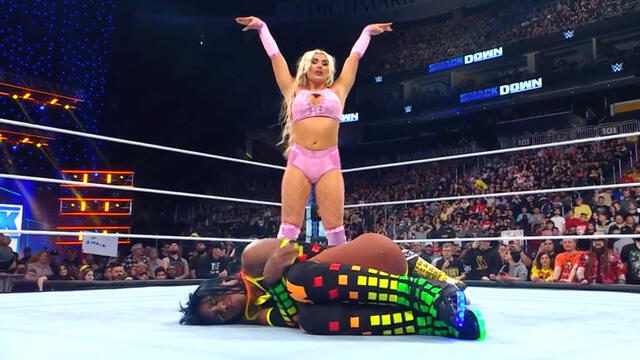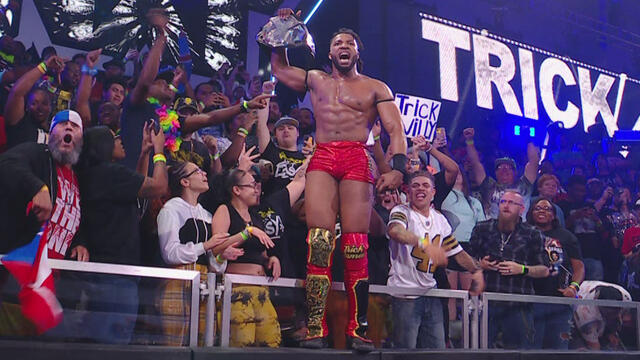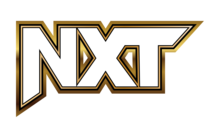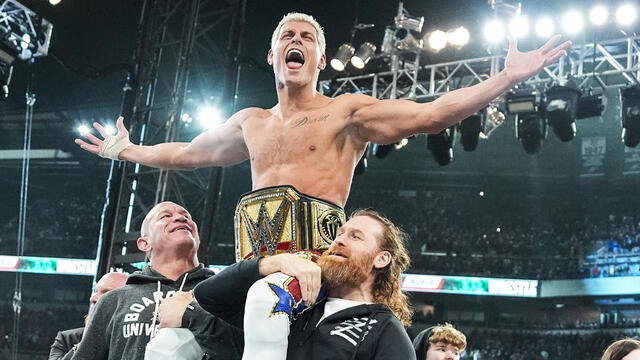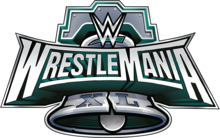
An introductory guide to the early WWE Champions

The WWE Championship became a piece of pop culture when Hulk Hogan grabbed it in 1984, but what did the title mean when it was held by Superstars like Stan Stasiak and "Superstar" Billy Graham? WWE Hall of Famer Howard Finkel educates us all on the early WWE Champions.
Before Hulkamania took pop culture by storm, Superstars like Bruno Sammartino, Bob Backlund and Pedro Morales were the standard bearers for WWE.
Watch the early WWE Champions in action | Photos of the lineage of WWE Champions
Learn more about these iconic competitors who took a piece of leather and some precious metals and turned it into sports-entertainment's most cherished prize.
Buddy Rogers
Arrogant, cocky and extremely self-confident, “Nature Boy” Buddy Rogers always came to the ring more than ready for battle. The Camden, N.J., native worked his way through the ranks in the 1940s and ’50s, always looking in great shape while garnering victory after victory with his trademark Figure-Four Leglock. Rogers’ success eventually brought him into the Northeast area of the U.S. just as WWE was taking shape. In April 1963, a tournament was held to determine its first champion, which Rogers won after defeating the high-flying Antonino Rocca.
Managed by the equally cocky Bobby Davis, the “Nature Boy” reigned briefly until he was matched against the immensely popular Bruno Sammartino in New York City’s Madison Square Garden. On May 17, 1963, in a record-setting 48 seconds, Rogers’ world came tumbling down, as a fired up Sammartino dethroned the “Nature Boy and became the new WWE Champion. A major influence on future icon Ric Flair, Rogers was posthumously inducted into the WWE Hall of Fame in 1994.
Bruno Sammartino
Recognized as one of the wrestling industry’s all-time greats, the recently enshrined WWE Hall of Famer had two historic runs as WWE Champion. His first reign began on May 17, 1963, as an upstart Sammartino upset “Nature Boy” Buddy Rogers in an unprecedented 48 seconds. For seven years, eight months and one day, Sammartino defended his title against the top villains of his era like Killer Kowalski, Gorilla Monsoon and Hans Mortier. No one could stop the Italian sensation until Jan. 18, 1971, when Ivan Koloff beat Sammartino before a stunned Madison Square Garden crowd.
Nearly three years later, on Dec. 10, 1973, the Garden was the setting for Sammartino to begin his second go ’round as champion, as he defeated Stan Stasiak for the title. From Ernie Ladd to Ken Patera, the challenges kept coming at a fast and furious pace. On April 30, 1977, an important era in WWE history came to an end when “Superstar” Billy Graham got the best of Bruno and won the WWE Championship.
Ivan Koloff
They did not call Ivan Koloff “The Russian Bear” for nothing. One of the most renowned Russian competitors, Koloff ran roughshod over all competition in the Montreal area in the late 1960s before making his WWE debut in 1970. Captain Lou Albano, a then–relative newcomer to managing, wound up representing Koloff, and boldly predicted the WWE Title would go around his client’s waist. That prediction came true on Jan. 18, 1971, when a knee drop off the top rope was enough for Koloff to defeat Bruno Sammartino and become the new WWE Champion.
Koloff’s reign was short-lived. Although immediately successful in title defenses against the likes of Chief Jay Strongbow and Gorilla Monsoon, the powerful Russian returned to the Garden three weeks later and lost the coveted championship to Puerto Rican sensation Pedro Morales on Feb. 8, 1971, before a delirious MSG gathering.
Pedro Morales
From Culebra, Puerto Rico, came Pedro Morales. A no-nonsense individual, Morales endeared himself to WWE fans of all ethnicities, but he found his true support with the South Americans of New York City. Returning to WWE in the late 1970s after a brief stint in the early ’60s, Morales worked his way up the ladder before receiving a WWE Title opportunity against Ivan Koloff on Feb. 8, 1971. That night, the three-week reign of Koloff ended, and the dawning of the Pedro Morales era began.
The Puerto Rican Superstar Morales headlined shows throughout the Northeast against challengers like Fred Blassie, Mr. Fuji and Ernie Ladd. His most notable defense occurred on Sept. 30, 1972 when Morales faced former champion Bruno Sammartino in New York’s Shea Stadium. After 75 grueling minutes, the match was declared a draw, due to curfew setting in. Morales finally lost the title on Dec. 1, 1973, in Philadelphia to Stan “The Man” Stasiak, after holding it for an impressive 1,027 days.
Stan Stasiak
Right place, right time. That sums up Stan “The Man” Stasiak’s ascension to the WWE Championship. Right place = Philadelphia. Right Time = Dec. 1, 1973. Stasiak challenged WWE Champion Pedro Morales on that fateful night, and when the dust settled, a new champion was crowned.
Stasiak, who was managed by The Grand Wizard, was a raw-boned, rugged individual who leveled opponents with a dangerous finishing maneuver, the Heart Punch. Unfortunately for Stasiak, his title reign was short lived, as nine days later on Dec. 10, 1973, Bruno Sammartino defeated “The Man” in Madison Square Garden to begin his second WWE Title reign.
"Superstar" Billy Graham
In an era where flamboyance was uncommon, “Superstar” Billy Graham had enough feathers to rival a peacock. Brazen and flashy, Superstar exhibited a combination of strength and showmanship to take him to where he needed to go. With the brilliant Grand Wizard guiding his career, Graham was undoubtedly the all-around package.
On April 30, 1977 in Baltimore, Md., the “man too sweet to be sour” accomplished his goal of becoming WWE Champion by ending the second title reign of Bruno Sammartino. For the next 10 months, Graham thwarted challengers like Dusty Rhodes, Chief Jay Strongbow, Mil Mascaras, the 600-pound Haystacks Calhoun and even Sammartino himself. Graham’s shrewdness and self-confidence knew no limits until Feb. 20, 1978, when a young upstart by the name of Bob Backlund pulled off what was considered an upset victory to become the new WWE Champion.
Bob Backlund
WWE’s all-American boy, Bob Backlund came to sports-entertainment in 1973 after a successful college wrestling career at North Dakota State University where he was an NCAA Champion in 1971. At the beginning of ’77, Backlund entered WWE and diligently worked his way to the top over the next year. On Feb. 20, 1978, that hard work paid off, as the Princeton, Minn., native defeated “Superstar” Billy Graham to capture the WWE Championship in front of a frenzied Madison Square Garden crowd.
For nearly six years, Backlund stood tall in his title defenses against the likes of the Magnificent Muraco, Greg “The Hammer” Valentine and Pat Patterson, who he faced an unprecedented four times in MSG in 1979. The American hero’s fate turned on Dec. 26, 1983, when The Iron Sheik beat him for the WWE Title after his manager, Arnold Skaaland, threw in the towel as Backlund was locked in the Camel Clutch.
The Iron Sheik
Khosrow Vaziri enjoyed a celebrated amateur career while representing his native country of Iran. He was destined to become a pro wrestler, which he did in 1972. His career led him to WWE, where in 1979 he debuted as The Great Hossein Arab. His crowning achievement during that year was winning the first-ever Battle Royal in Madison Square Garden. And for his win, he received a WWE Title Match against Bob Backlund on the same card. He did not win the title that night, but he did not forget that evening either.
Fast forward to Dec. 26, 1983. Now known as The Iron Sheik, Vaziri faced off with Backlund again. The WWE Title was on the line, and once the final bell rang, The Iron Sheik reigned supreme as the new champion. He did not get much time with the title, though, as on Jan. 23, 1984, a Hulk Hogan leg drop spelled Sheik’s demise. Little did the WWE Universe know that the world of sports-entertainment was about to change forever.
WWE Shows Latest Results
SmackDown results, April 19, 2024: Tiffany Stratton introduces Bayley and Naomi to Tiffy Time with a sneak attack
Full ResultsNXT Spring Breakin' 2024 Week One results: Trick Williams slays The Mad Dragon to become NXT Champion
Full Results







